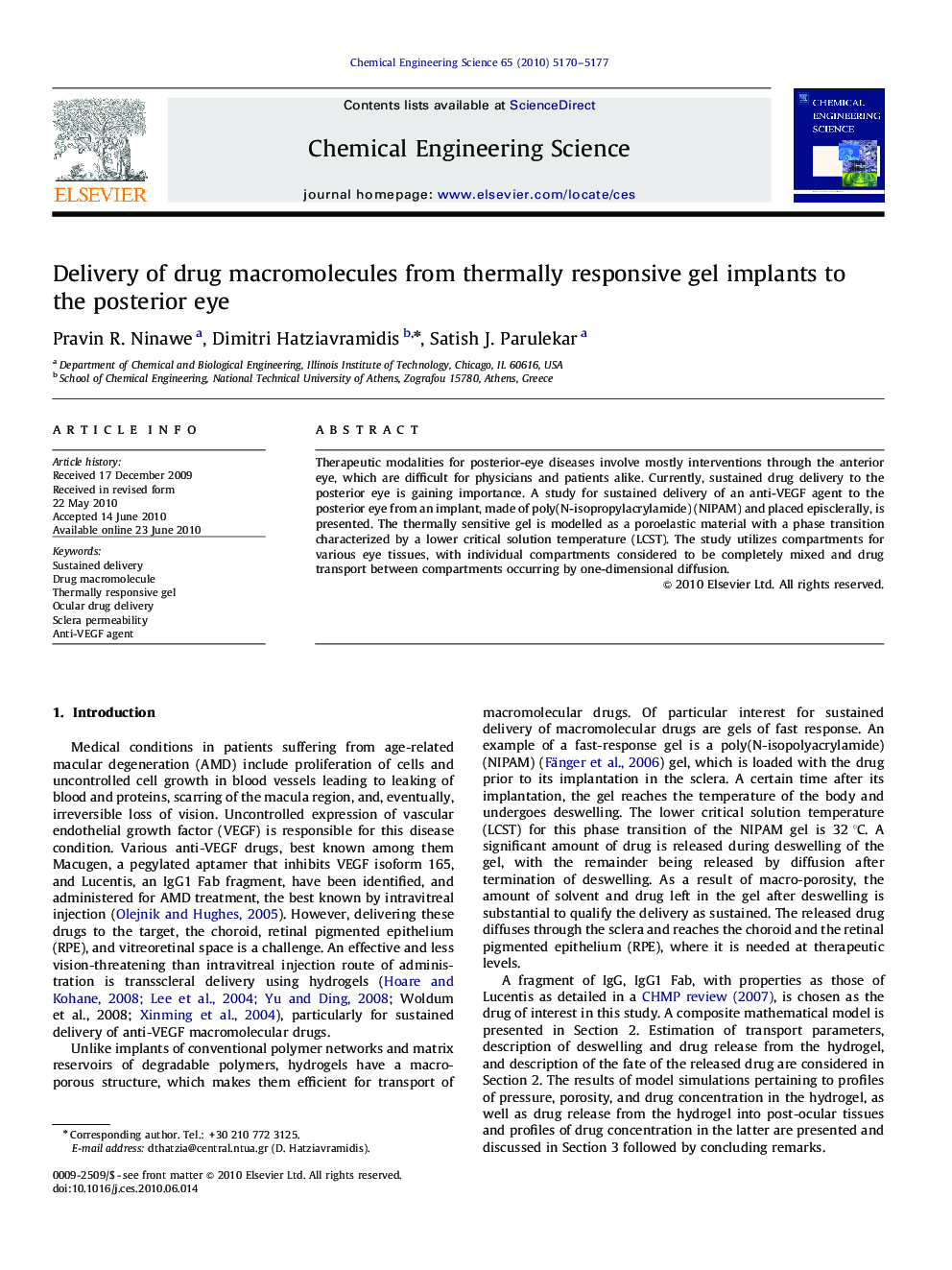| Article ID | Journal | Published Year | Pages | File Type |
|---|---|---|---|---|
| 157021 | Chemical Engineering Science | 2010 | 8 Pages |
Therapeutic modalities for posterior-eye diseases involve mostly interventions through the anterior eye, which are difficult for physicians and patients alike. Currently, sustained drug delivery to the posterior eye is gaining importance. A study for sustained delivery of an anti-VEGF agent to the posterior eye from an implant, made of poly(N-isopropylacrylamide) (NIPAM) and placed episclerally, is presented. The thermally sensitive gel is modelled as a poroelastic material with a phase transition characterized by a lower critical solution temperature (LCST). The study utilizes compartments for various eye tissues, with individual compartments considered to be completely mixed and drug transport between compartments occurring by one-dimensional diffusion.
